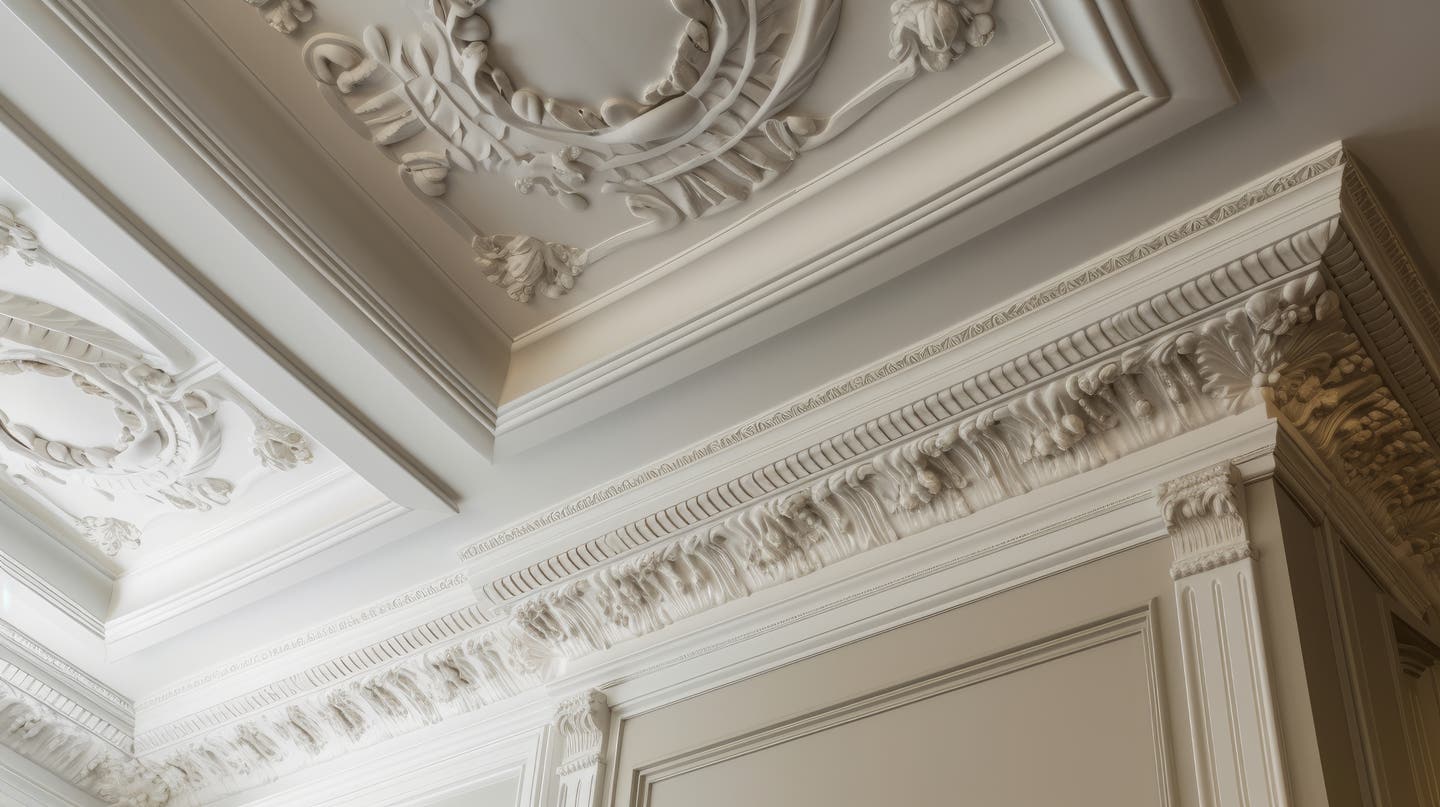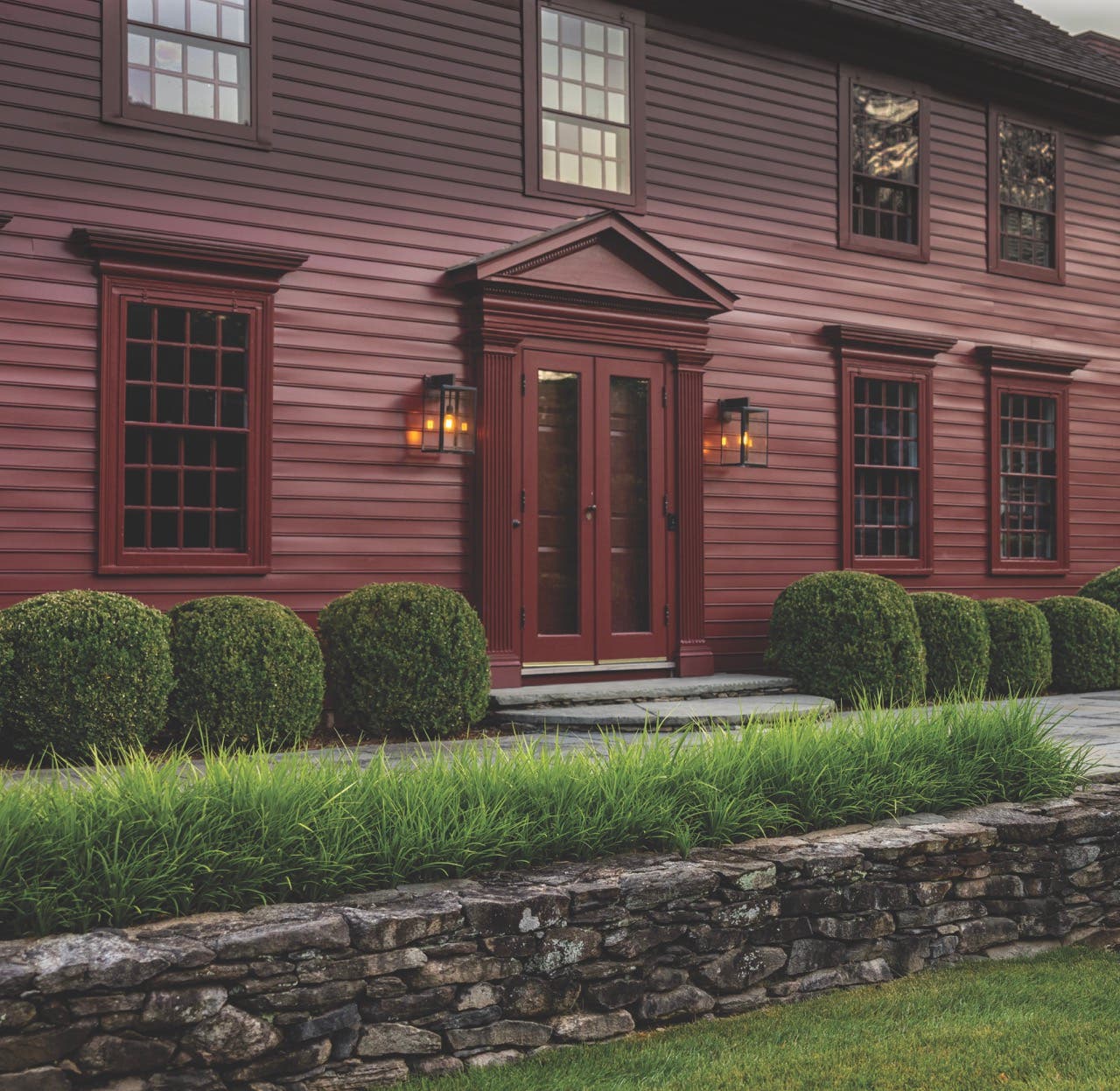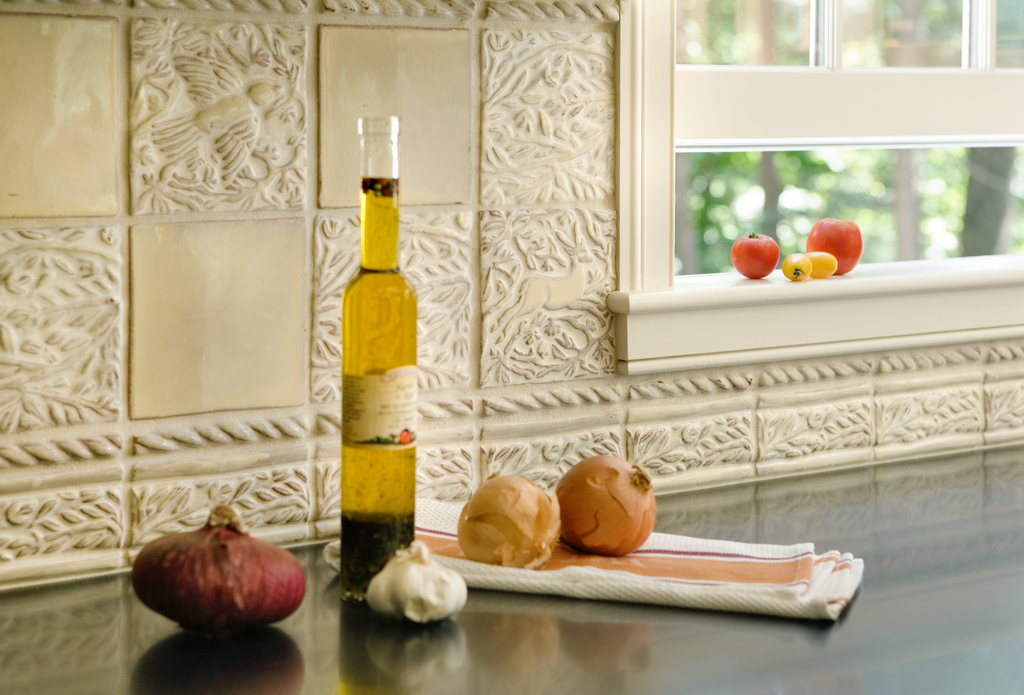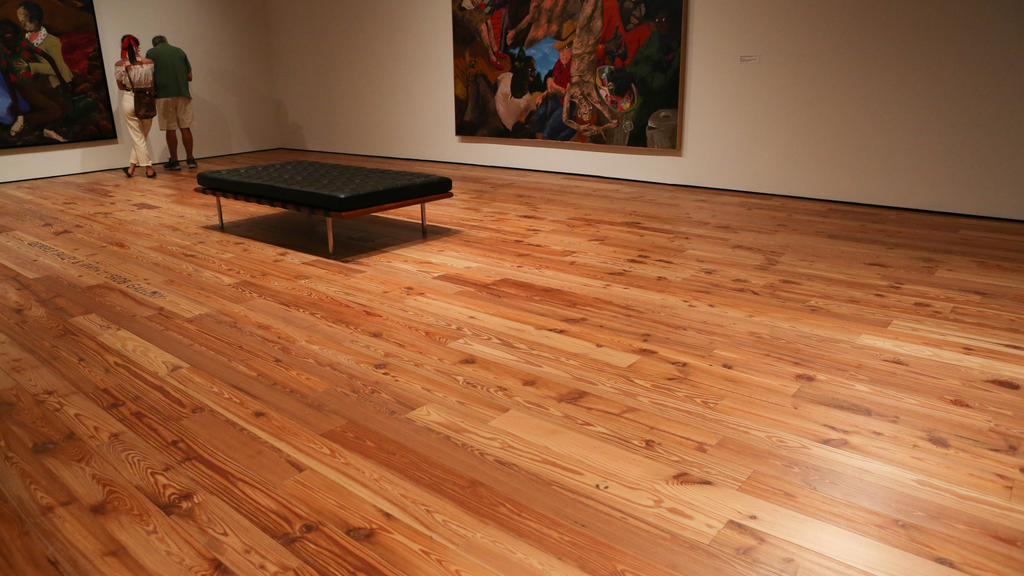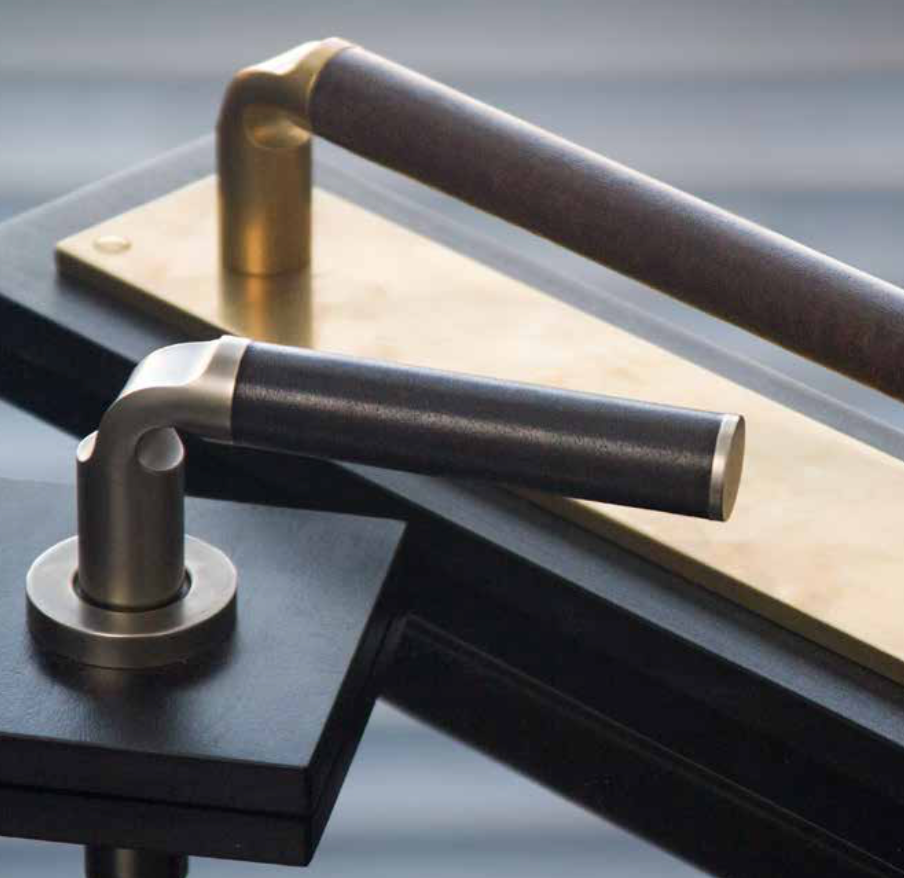
Product Reports
Door Handle Styles
As our high-tech, digital age runs ever faster on invisible, intangible soft- ware, it’s worth remembering that none of it would be possible without builders’ hardware, the finishing metal work used to swing doors or operate lock and latches while adding aesthetic appeal. Though the period house marketplace has long had dealers in reproduction hardware—often from offshore suppliers—some of the most authentic and attractive products come from domestic, specialist companies who are themselves manufacturers and collectors, as well as dedicated experts in the field of historic hardware and design.
A striking example is E.R. Butler & Co. in New York, where Rhett Butler says the company’s reputation for high quality and attention to detail stems from a remarkable provenance. “We’re the product of more than five generations of hardware manufacturing,” he explains. “Our history is based in Early American/Federal/Georgian design of the early 1800s, but also includes manufacturing hardware for many of the early modernist architects from the 1930s to 1960s.”
Coming from a different angle is American Historic Hardware in Cooperstown, New York, who have forged a business out of a remarkable niche. “We are known for carrying unused, original stock hardware (or NOS for new old stock), as well as restored and rebuilt original pieces,” explains Janet Rigby. “This is the same hardware—some- times in original packaging—used to build houses and buildings from the late-19th through the mid- 20th century, just brand-new and 90 years old.”
Another primary source is The Nanz Company in New York where Sarah Ehrlich says that, from a historical perspective, they offer a great variety in their product lines, from hardware based on original, traditional styles to very modern and new designs. “We’re not in the business of distributing other people’s hardware, so we really do manufacture everything ourselves, using various manufacturing methods, from casting to machining to forging, to assure the best quality.”
Not Just Mechanics
The market for historic-style hardware pivots with the ebb and flow of general building construction and renovation, of course, but not without some period-influenced turns and twists. In his client base, Butler says the demand for period hardware continues to grow, albeit by degrees. “We appear to have moved past the significant drop in construction since 2009, however, I view the current conditions as a slow return to ‘normal’ rather than coming back to the levels of 2008.” He adds that they are encountering more multi-unit residential interest than in the past.
Over their 23 years in business, the Rigbys of American Historic Hardware say they find some of the same interest cycles repeating themselves. “When the economy is good, we’re dealing with architects and designers,” says Janet, “and when the economy is soft, we’re dealing with the homeowners themselves.” She adds that most of their new customers are still homeowners, but since 2015, they’ve seen calls from architects and designers on the rise again.
Ehrlich at The Nanz Company reports that they get busier every year. “We’re based in New York, and we see that people continue to renovate their homes and apartments with frequency, for example, investing in really beautiful, heavy-duty exterior door and window systems.” She notes a lot of great quality and fine-art details coming from all the architects and designers with which they work. In fact, one of their new growth areas is in marine hardware for yachts that, of course, also have doors and cabinets.
When it comes to historical accuracy, it’s hard to find hardware more authentic than that flowing from original designs and patterns—what’s more by historic companies. According to Butler, “The overwhelming majority of our work is precedence, or historical work based on our archives.” As he explains, when E.R. Butler & Company acquired the W.C. Vaughan Company of Boston in 2000, with it came a wealth of patterns, tools, and drawings built up since roughly the 1830s. Incorporated in 1902, the W.C. Vaughan Company had likewise acquired renowned 19th century hardware manufacturers, such as L.S. Hall and Enoch Robinson & Co. “Robinson is considered to be the oldest hardware company in the United States,” says Butler, “officially producing hardware in 1837, so all that’s in our archives and we’re really trying to keep a focus on that history.”
By good fortune, W.C. Vaughan was also dead center in the early Modernist, International Style movement of the 1930s. “Being situated in Boston and very close to Harvard, where Walter Gropius headed the architecture department with Marcel Breuer at his wing, a whole generation of architects trained at Harvard were using Vaughn,” says Butler. “As a result, Vaughn went from producing almost exclusively Colonial hardware to producing a very broad mix of Colonial on the one hand and high modern on the other. So we have hundreds of drawings by Gropius, Breuer, and many other Modernists at our disposal for our work today.”
Nanz too is able to draw on actual history. Says Ehrlich, “Originally, our owners worked in the restoration of pre-World War II buildings, and so some of our designs come from being able to put something in these historic buildings that worked better.” Whether they follow the forms of modern architecture, or what architects of a time were building, a lot of their designs stem from a historic precedent, she says. “We have geometric, organic, and classical products that we design through traditional pencil and paper techniques, as well as 2D and 3D software, so it’s really quite a range.”
Historical Taste is Timeless
Even though the market for period-style hardware is, in ways, geared to building construction, its aesthetic appeal clearly runs on its own track—far from locked-in to either chronological fashions of the past or the eclecticism of today. As Bill Rigby points out, the interests of people who love traditional houses, whether old or new, often transcend trends. “They are looking for the right hardware for their house, or they’re looking to save and expand the original hardware they already have.” That being said, both Rigbys note that Mid-Century Modern is definitely coming into its own. “We’re starting to see people ask for the sleek styles in chrome and brushed bronze.” At the same time they’re also getting a lot of calls for unrestored, reclaimed hardware, “not scrap or problem pieces (we don’t sell that), but hardware that retains a patina no one would have wanted 15 years ago.”
If all that sounds a bit unhinged as far as architectural logic, it pays to take a step back. “The door hardware that people see is the eye-candy,” says Janet Rigby. “It customarily follows the architecture of the house, with fancy cast or embossed hardware for Victorian or Edwardian styles, or simple knobs and roses for the Colonial Revival era.” She adds, though, that archival hardware catalogs show that past styles were fluid, with many popular at the same time as new, emerging styles overlapped with fading ones.
Butler opens up another point. “Both of the styles we’re talking about—Colonial and Modern—are aesthetically fairly simple, so I don’t believe that either of them has ever gone out of fashion.” For sure, he explains, Colonial building and design has gone in and out of vogue, and people may not use H and L hinges or rim locks. “But a simple, turned, round knob is about as basic and as simple as it gets and likely never been out of style. The same is true for the plain unornamented lever handles that Modernists favored.” In fact, he says a lot of the hardware that the Modernists were using are designs he’s seen from the 1800s. “I’m not sure it could even be called Modernist, but they focused on designs that were simple, elegant, and unadorned—not screaming, ‘Hey, I’m this certain style or design.’”
In fact, the taste for Modern and minimalist design can take hardware almost to its mechanical limits. According to Ehrlich, “One of the things that we’ve seen recently is a real drive towards concealed mounting systems. On a lot of newer projects, people don’t want to see the screws that attach the hard- ware to the door, or attach one part to another; for some people that reads as traditional.” Additionally, she explains that since usually a handle or thumb turn sits on a rose, some clients also want to see these backplates for the hardware really minimized. “This way, whatever handle they have selected is really the main thing that they’re seeing, really feels like part of the architecture, and the viewer’s eye isn’t attracted to, say, a lot of brass pieces.”
What then is the visual appeal of hardware that is pared back to almost its functional essence? Suggests Bill Rigby, every period has its own answer. Take for example a house from 1810 or earlier—a time when hardware was hard to come by and sparely used— where in your restoration you hang the doors with cast butt hinges that are just blackened iron because that’s what the house had originally. “Then those black-iron hinges are what were meant to jump out at anyone who sees those doors,” he says. “I would still call that eye-candy.”
Gordon Bock is an architectural historian, instructor with the National Preservation Institute (www.npi.org), and in-demand speaker through www.gordonbock.com.
Gordon Bock, co-author of The Vintage House (www.vintagehousebook.com), is an in-demand speaker for courses, seminars, and keynote addresses through www.gordonbock.com.




